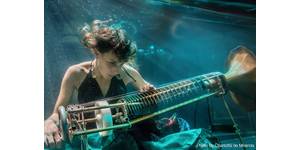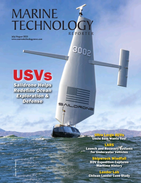Ocean Observation Systems
Ocean observation systems are platforms designed to study ocean processes in real time. They return continuous data to researchers back on shore. Similar to other undersea tools they can be equipped with various tools and systems including computer command and storage capability, power supplies, sensors, Internet connections and communication systems. There are currently a number of ocean observatory platforms carrying out varied studies around the world. The Santa Cruz Ocean Observatory Platform also known as SCOOP out of UC Santa Cruz was designed to detect and investigate harmful algal blooms (HABs) and red tides. It also serves as a platform where instrumentation can be tested. The Monterey Bay Aquarium Research Institute (MBARI) has a number of platforms deployed including its OASIS moorings that produce data from mooring and cruise operations. MBARI also has MOOS, the Monterey Ocean Observing System, MARS their cabled observatory test bed and LOBO their Land/Ocean Biogeochemistry Observatory Moorings. The Woods Hole Oceanographic Institute has an array of observatory projects and programs.
Ocean observatory platforms afford scientists the opportunity to monitor ocean behavior to track seafloor changes over the course of weeks, months and years. Observatory systems can detect earthquake tremors and the beginnings of tsunami wave activity. In order to have a full comprehension of ocean activities scientists need to establish a presence and through ocean observatory platforms they are doing just that, creating outposts in the sea by which to monitor and collect data of dynamic ocean activity. With advances in technology scientists can now study small-localized events as well as changes taking place on a much larger scale. There are three categories of ocean observatories currently in use or in development. Through coastal observatories, a combination of cabled systems and underwater nodes, moorings, buoys, and other observing platforms, scientists are monitoring the coastal environment and exploring the fundamentals of ocean processes on the continental shelf. With regional cabled observatories fiber-optic communication systems along with electric power cables establish grids for sensors on the sea floor and in the water column. The third system is the global observatories and arrays system. This system uses drifters, floats, arrays of buoys and moorings along with acoustic modems and satellite relays. Scientist are now able to observe the ocean systems and through this understanding have a better idea of our earths global ocean phenomenon.












 August 2025
August 2025



